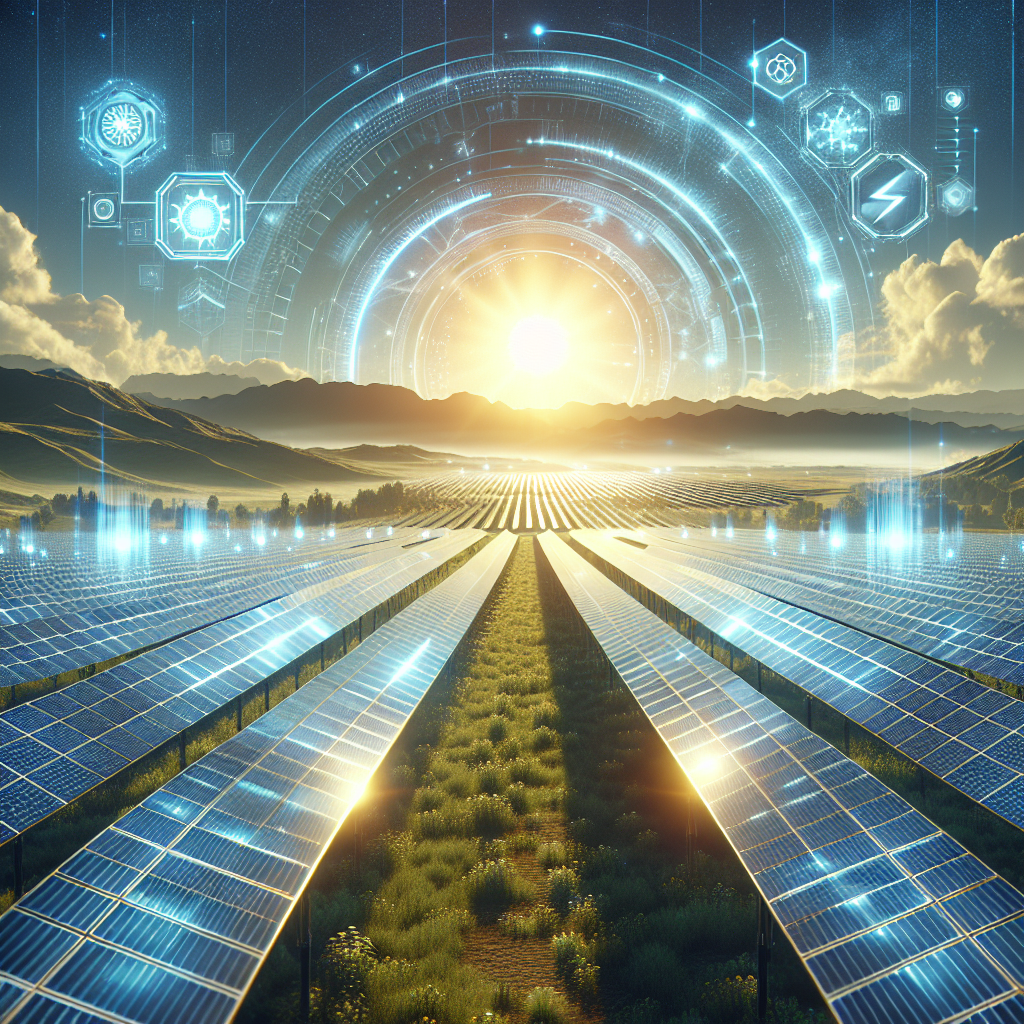Harnessing the Sun: The Future of Solar Power in Sustainable Energy Generation
In the quest for sustainable energy solutions, solar power stands out as a beacon of hope and potential. As the world grapples with the dual challenges of climate change and the increasing demand for electricity, the sun offers an abundant, clean, and entirely renewable source of energy. This article delves into the transformative role of solar power in the future of energy generation, examining its benefits, technological advancements, and the challenges it faces.
The Rise of Solar Power
Solar power generation involves converting sunlight into electricity, either directly using photovoltaics (PV) or indirectly with concentrated solar power (CSP). The appeal of solar energy is evident in its rapid growth over the past decade, driven by technological advances, cost reductions, and a growing recognition of its environmental benefits.
Benefits of Solar Power
Renewable and Abundant: The sun provides a virtually limitless supply of energy, delivering more power to the Earth in one hour than the global population consumes in a year.
Reduces Carbon Footprint: Unlike fossil fuels, solar power produces no harmful emissions, making it a clean energy source that significantly reduces greenhouse gas emissions and combats climate change.
Energy Independence: Solar power can reduce reliance on imported fuels, enhancing energy security and stability.
Economic Growth: The solar industry creates jobs in manufacturing, installation, and maintenance, contributing to economic development.
Technological Advancements
Photovoltaic Innovations: Recent years have seen significant improvements in PV technology, including higher efficiency rates, bifacial panels that capture sunlight on both sides, and flexible solar cells that can be integrated into various surfaces.
Energy Storage: The integration of solar power with advanced battery storage systems addresses the issue of intermittency, allowing for the storage of excess energy generated during the day for use at night or during cloudy periods.
Concentrated Solar Power (CSP): CSP technology, which uses mirrors or lenses to concentrate a large area of sunlight onto a small area, is advancing in terms of efficiency and storage capabilities, offering potential for large-scale, baseload solar power generation.
Overcoming Challenges
Despite its many advantages, the widespread adoption of solar power faces several challenges. These include the need for significant upfront investment, the requirement for large areas for solar farms, and the ongoing issue of intermittency. However, with continued technological innovation and supportive policies, these challenges are increasingly being overcome.
Economic and Policy Support: Government incentives, subsidies, and policies play a crucial role in promoting solar power. Feed-in tariffs, tax credits, and renewable energy mandates have been effective in various countries.
Community Solar: Community solar projects allow people to benefit from solar power without having to install panels on their own property, making solar energy accessible to a broader audience.
Microgrids and Distributed Generation: The development of microgrids and the focus on distributed generation can enhance the resilience of the power system and bring solar power to remote and underserved communities.
The Future of Solar Power
Looking ahead, the future of solar power is bright. Continuous improvements in technology and efficiency, coupled with decreasing costs, make solar power increasingly competitive with conventional energy sources. The global shift towards clean energy, driven by the need to address climate change, positions solar power as a key component of the future energy mix.
As solar power becomes more integrated into the energy system, it will play a pivotal role in achieving global sustainability goals. The expansion of solar energy can contribute to reducing carbon emissions, enhancing energy security, and fostering economic development, all while providing clean, renewable power to meet the world’s growing energy needs.
FAQs
Q: Is solar power reliable?
A: While solar power is intermittent, advancements in energy storage and grid management are improving its reliability. Solar can be paired with other forms of renewable energy and storage solutions to provide a consistent power supply.
Q: How long do solar panels last?
A: Solar panels typically have a lifespan of 25 to 30 years, during which they can produce electricity at a slightly reduced efficiency as they age.
Q: Can solar power be used at night?
A: Solar power itself cannot be generated at night, but solar power generated during the day can be stored in battery systems and used at night.
Q: What is the environmental impact of solar panel production?
A: Solar panel production involves energy consumption and the use of materials, which can have environmental impacts. However, the life cycle emissions of solar power are much lower than those of fossil fuels, and recycling programs for solar panels are developing to minimize waste.
Q: How does solar power compare in cost to other energy sources?
A: The cost of solar power has decreased dramatically and is now competitive with, or even cheaper than, traditional energy sources in many parts of the world. The cost will continue to decline as technology improves and economies of scale are achieved.
In conclusion, solar power represents a cornerstone of sustainable energy generation. Its potential to provide clean, renewable, and abundant energy positions it as a critical component of the global transition to a more sustainable energy future. Through continued innovation, supportive policies, and collective action, the promise of solar power can be fully realized, ushering in a new era of energy generation that benefits both people and the planet.

